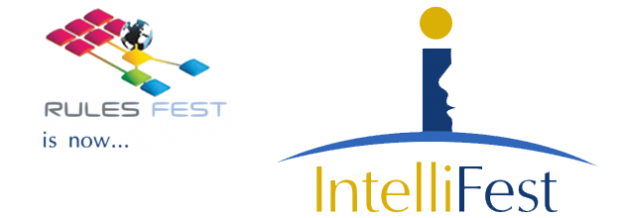This week in JBoss (6th of September 2012)
Posted by marklittle in Weekly Editorial on Sep 6, 2012 9:01:05 AMIn last week's entry we recapped that Red Hat had acquired yet another company. This time it was Polymita.
Mark Proctor shares his thoughts on the acquisition and I'm sure we'll be hearing a lot more from him and his team and the integration of the company begins. And whilst we're on the subject of the very prolific extended Drools team, it's worth pointing you at some other things they've been up to this week including Geoffrey on Drools Planner, a very interesting article on the UIs necessary for good human task interactions (time to get involved too if this is of interest to you), and also there's the IntelliFest Drools & jBPM Workshop in San Diego next month, where you can meet the entire team.
Moving on to some non-Drools related activities, we've got more activity in the Arquillian project with the release of an alpha version of their persistence extension, the first candidate release of Seam 2.3.0 is out (congrats to the team!!). Randall has written a nice article on a new feature in ModeShape 3, that of respository backup and restore. As he says in the introduction:
"There are several reasons why you might want to restore a repository to a previous state, and many are quite obvious. For example, the application or the process it’s running in might stop unexpectedly. Or perhaps the hardware on which the process is running might fail. Or perhaps the persistent store might have a catastrophic failure (although surely you’re also using the persistent store’s backup system, too). But there are also non-failure related reasons. Backups of a running repository can be used to transfer the content to a new repository that is perhaps hosted in a different location. It might be possible to manually transfer the persisted content (e.g., in a database or on the file system), but the process of doing so varies with different kinds of persistence options. Also, ModeShape can be configured to use a distributed in-memory data grid that already maintains its own copies for ensuring high availability, and therefore the data grid might not persist anything to disk. In such cases, the content is stored on the data grid’s virtual heap, and getting access to it without ModeShape may be quite difficult. Or, you may initially configure your repository to use a particular persistence approach that suitable given the current needs, but over time the repository grows and you want to move to a different, more scalable (but perhaps more complex) persistence approach. Finally, the backup and restore feature can be used to migrate to a new major version of ModeShape."
So take a look and provide feedback, because ModeShape 3 will be a significant advancement.
And finally for now, Eric has written something to help anyone who wants to try out the JBossWorld 2012 keynote demo for themselves at a JBUG or elsewhere!


Comments